Abstract
The natural history of atrial septal defect becomes increasingly difficult to determine with the number of patients having operations. The expectation of life has been calculated for those surviving their first year by two quite independent methods: (I) from 121 reported necropsies and (2) by calculating the mortality rates each decade from 25 deaths among 167 personal or reported patients followed for 663 patient-years. They were patients rather than the ideal of unselected children, but many were symptomless when first seen and sent only because of their physical signs. The two methods gave close agreement about the percentages still living at the end of each decade, generally within +/- 1 or 2 per cent and only as much as +/- 4.5 per cent in the second decade. With the relatively small numbers involved, such close agreement is probably fortunate. The mortality rates are low for the first two decades, 0.6 and 0.7 per cent per annum. In successive decades they rise from 2.7, to 4.5, to 5.4, and 7.5 per cent per annum. One-quarter have died just before their 27th year, half by their 36th year, three-quarters by 50, and 90 per cent by 60 years. The arithmetical mean age of death is 37.5 +/- 4.5 years. The median is also 37 years. The mode is widely spread through the 3rd to 6th decades. All these figures are better than those for aortic stenosis, coarctation of the aorta, and pulmonary stenosis. In and after the fourth decade they approximate more closely to the figures for aortic stenosis and coarctation but are still better than those for pulmonary stenosis. They are improved on only by those with a persistent ductus.
Full text
PDF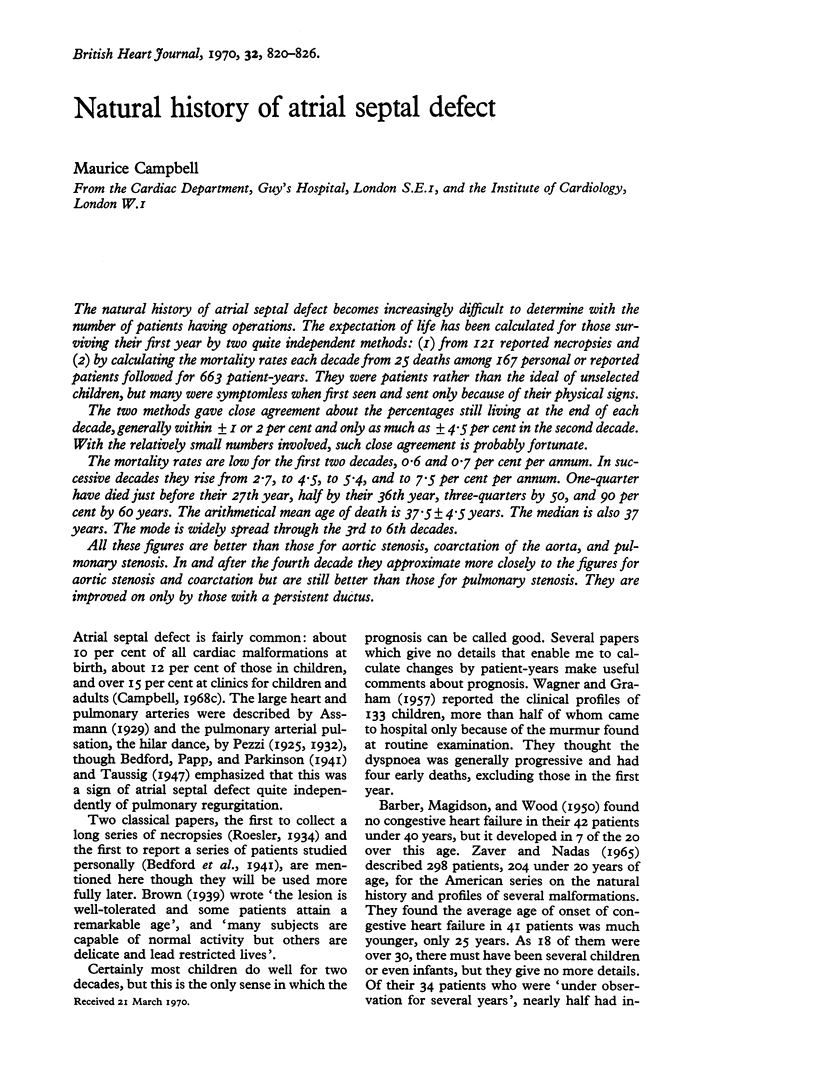
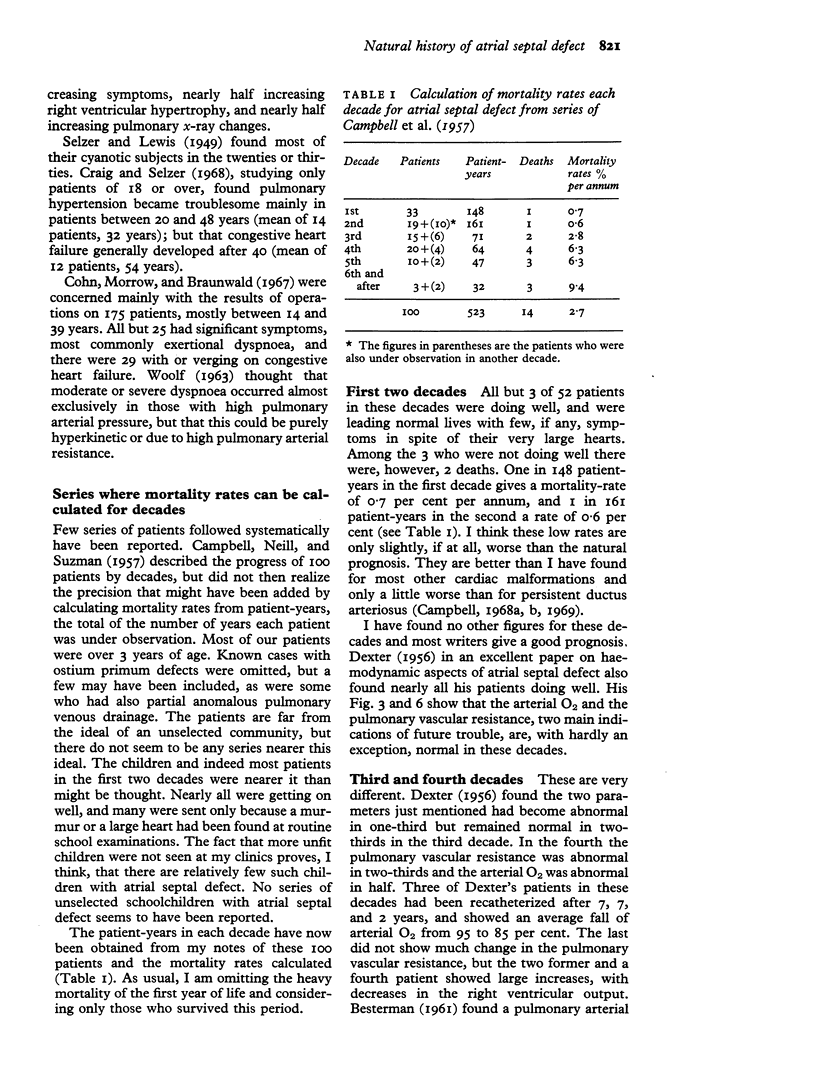
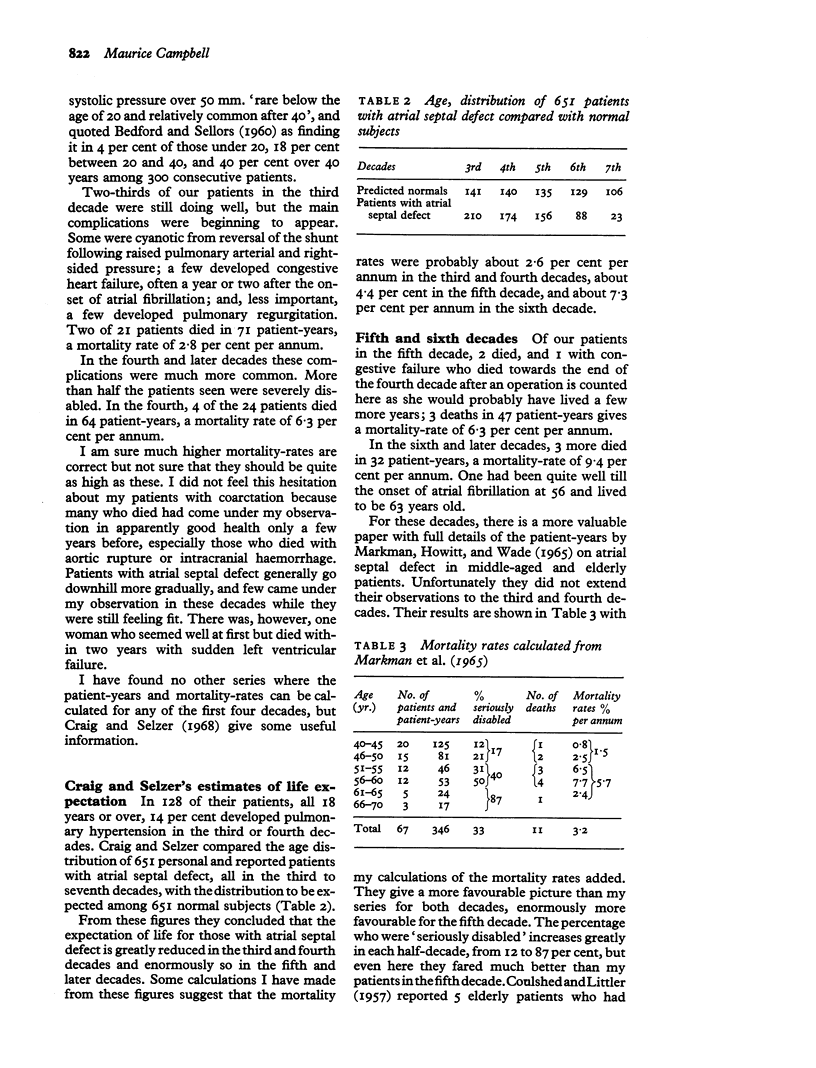
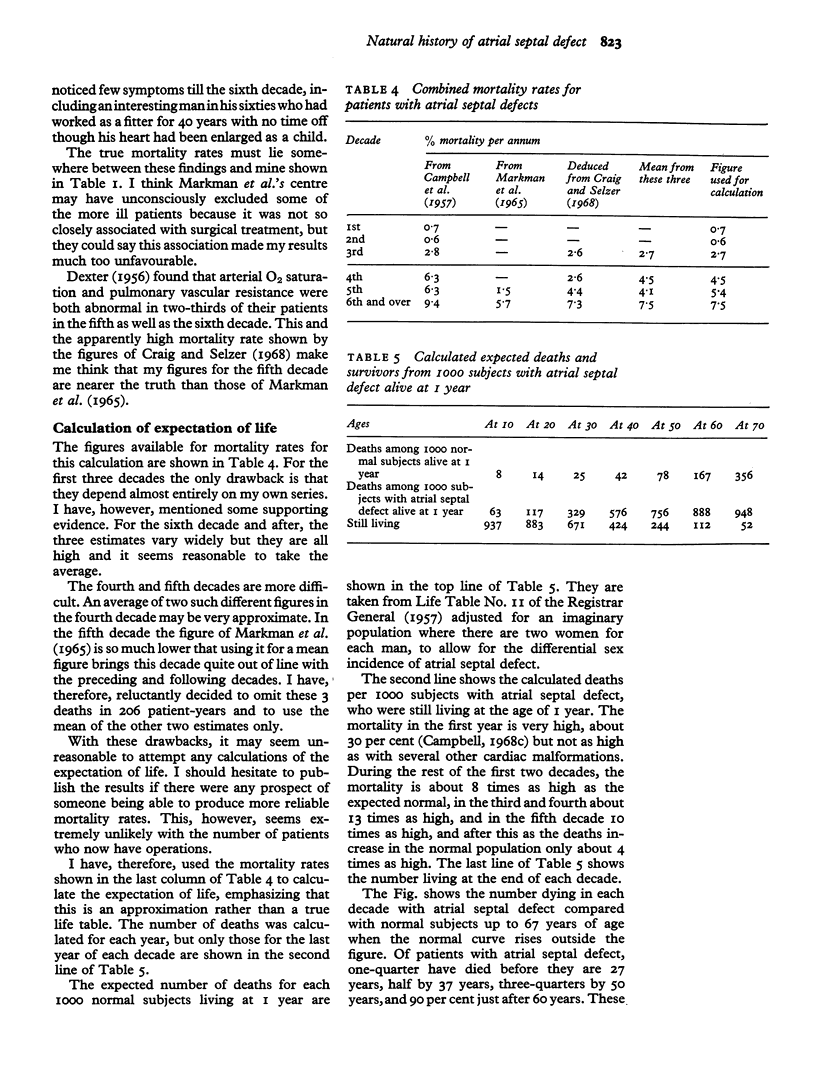
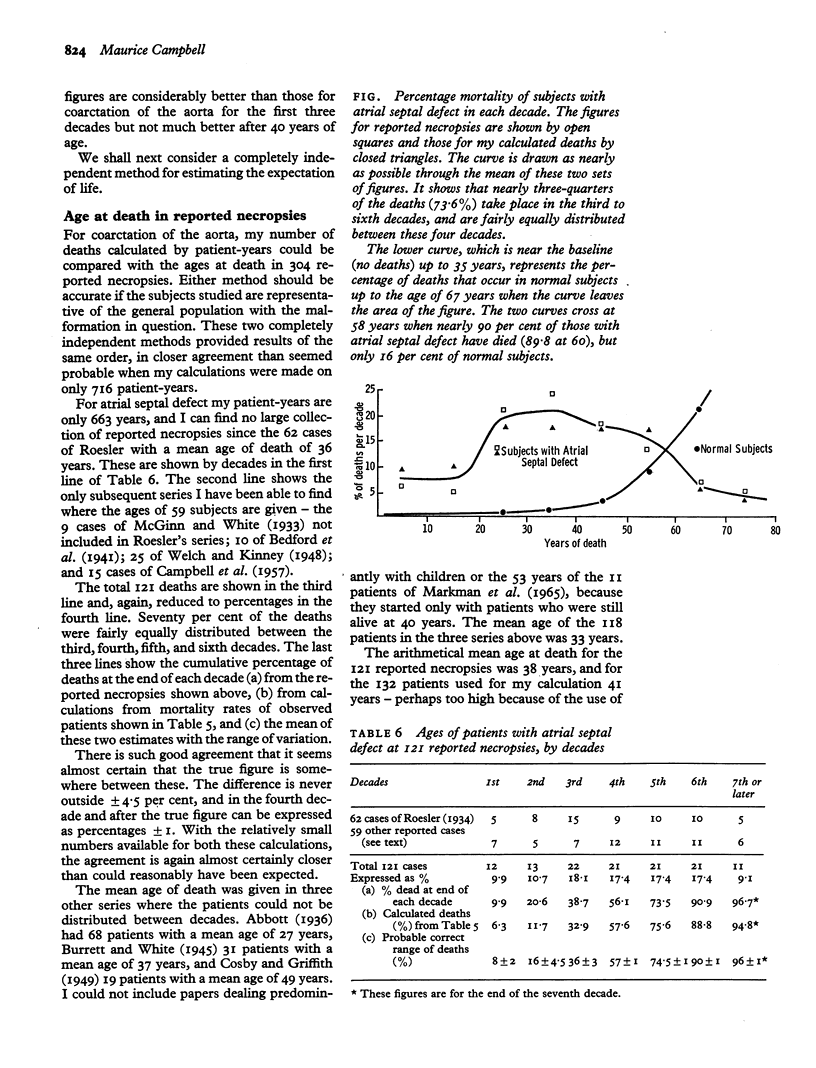
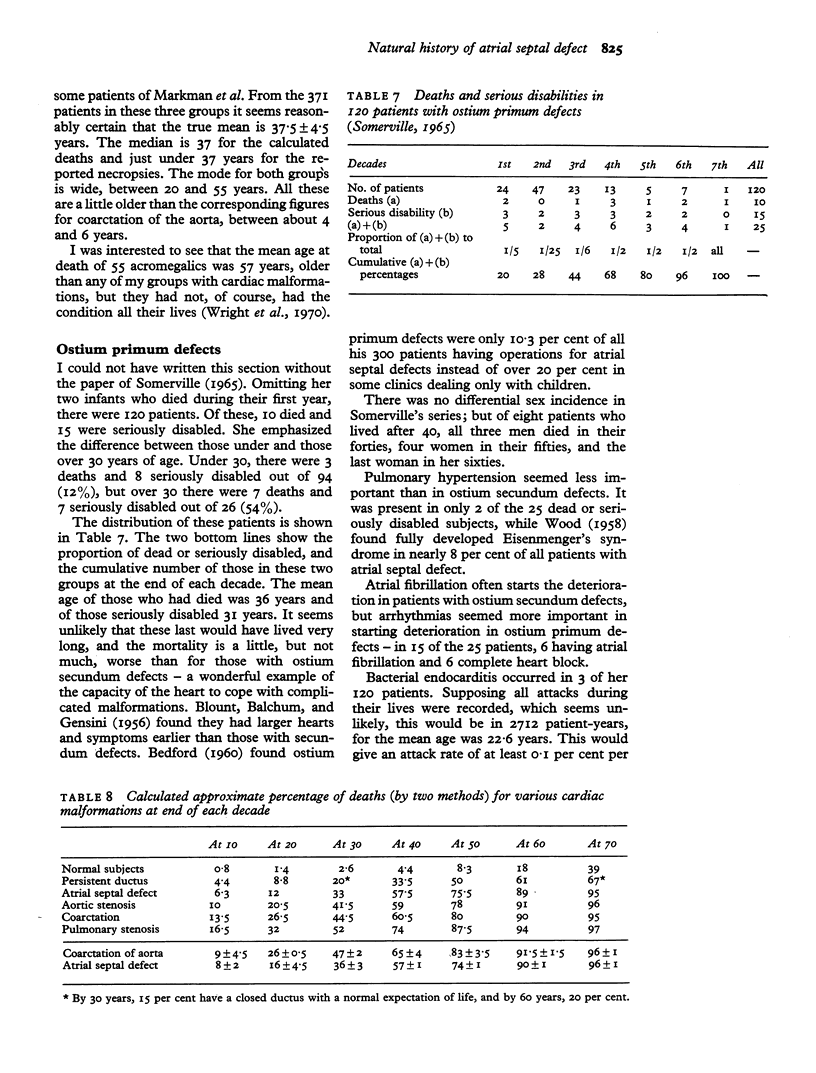
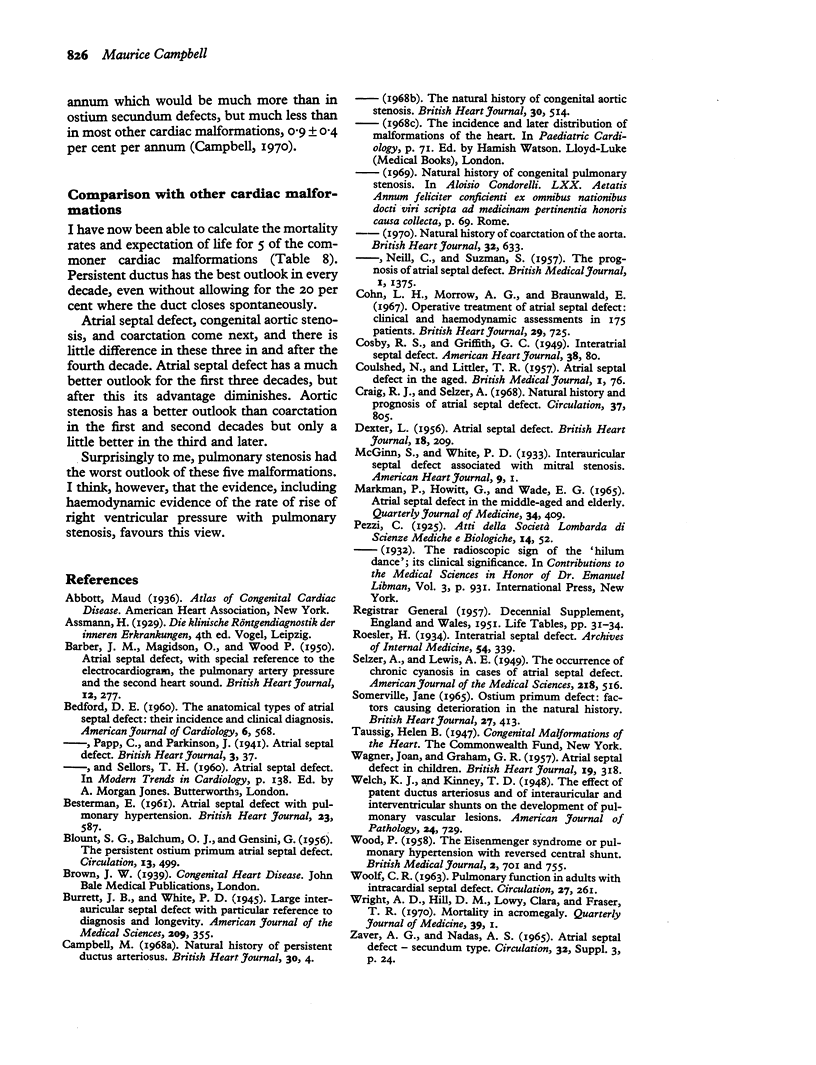
Selected References
These references are in PubMed. This may not be the complete list of references from this article.
- BALCHUM O. J., BLOUNT S. G., Jr, GENSINI G. The persistent ostium primum atrial septal defect. Circulation. 1956 Apr;13(4):499–509. doi: 10.1161/01.cir.13.4.499. [DOI] [PubMed] [Google Scholar]
- BEDFORD D. E. The anatomical types of atrial septal defect. Their incidence and clinical diagnosis. Am J Cardiol. 1960 Sep;6:568–574. doi: 10.1016/0002-9149(60)90258-7. [DOI] [PubMed] [Google Scholar]
- Besterman E. ATRIAL SEPTAL DEFECT WITH PULMONARY HYPERTENSION. Br Heart J. 1961 Sep;23(5):587–598. doi: 10.1136/hrt.23.5.587. [DOI] [PMC free article] [PubMed] [Google Scholar]
- COULSHED N., LITTLER T. R. Atrial septal defect in the aged. Br Med J. 1957 Jan 12;1(5010):76–80. doi: 10.1136/bmj.1.5010.76. [DOI] [PMC free article] [PubMed] [Google Scholar]
- Campbell M. Natural history of persistent ductus arteriosus. Br Heart J. 1968 Jan;30(1):4–13. doi: 10.1136/hrt.30.1.4. [DOI] [PMC free article] [PubMed] [Google Scholar]
- Cohn L. H., Morrow A. G., Braunwald E. Operative treatment of atrial septal defect: clinical and haemodynamic assessments in 175 patients. Br Heart J. 1967 Sep;29(5):725–734. doi: 10.1136/hrt.29.5.725. [DOI] [PMC free article] [PubMed] [Google Scholar]
- Craig R. J., Selzer A. Natural history and prognosis of atrial septal defect. Circulation. 1968 May;37(5):805–815. doi: 10.1161/01.cir.37.5.805. [DOI] [PubMed] [Google Scholar]
- DEXTER L. Atrial septal defect. Br Heart J. 1956 Apr;18(2):209–225. doi: 10.1136/hrt.18.2.209. [DOI] [PMC free article] [PubMed] [Google Scholar]
- Markman P., Howitt G., Wade E. G. Atrial septal defect in the middle-aged and elderly. Q J Med. 1965 Oct;34(136):409–426. [PubMed] [Google Scholar]
- SOMERVILLE J. OSTIUM PRIMUM DEFECT: FACTORS CAUSING DETERIORATION IN THE NATURAL HISTORY. Br Heart J. 1965 May;27:413–419. doi: 10.1136/hrt.27.3.413. [DOI] [PMC free article] [PubMed] [Google Scholar]
- WELCH K. J., KINNEY T. D. The effect of patent ductus arteriosus and of inter-auricular and interventricular septal defects on the development of pulmonary vascular lesions. Am J Pathol. 1948 Jul;24(4):729–761. [PMC free article] [PubMed] [Google Scholar]
- WOOLF C. R. PULMONARY FUNCTION IN ADULTS WITH INTRACARDIAC SEPTAL DEFECT. Circulation. 1963 Feb;27:261–267. doi: 10.1161/01.cir.27.2.261. [DOI] [PubMed] [Google Scholar]


